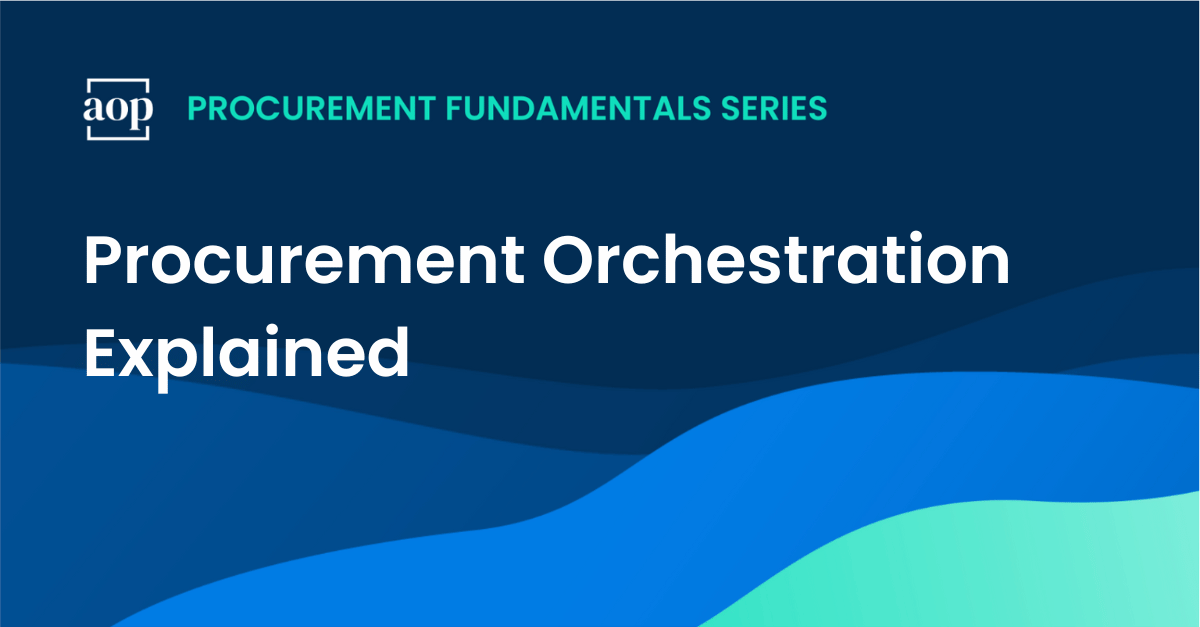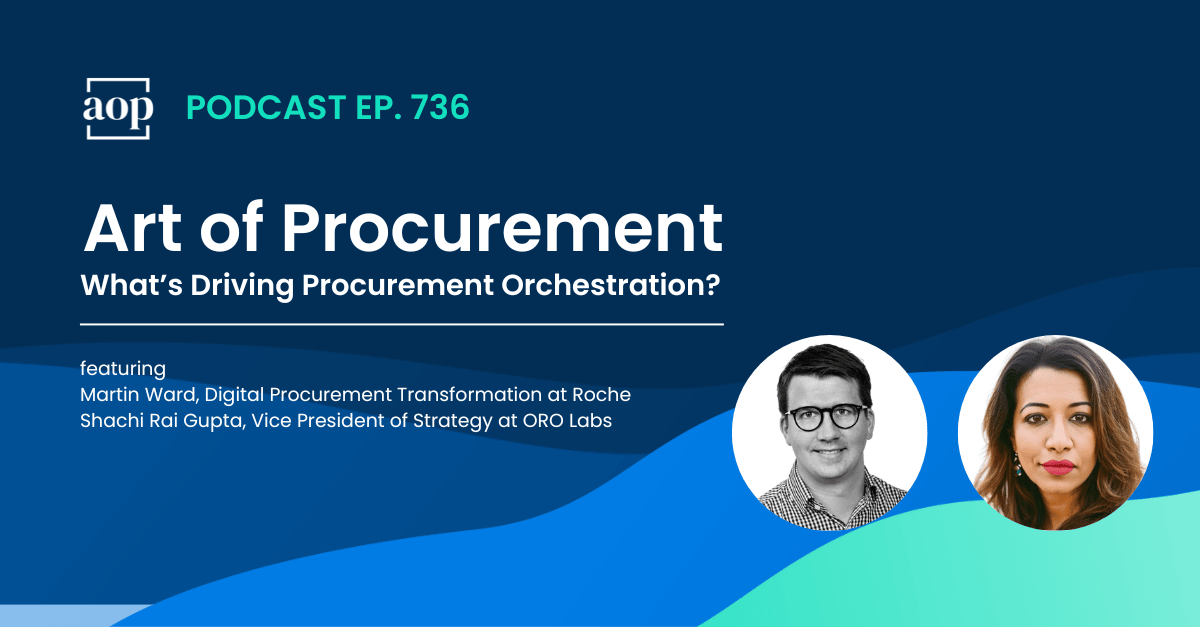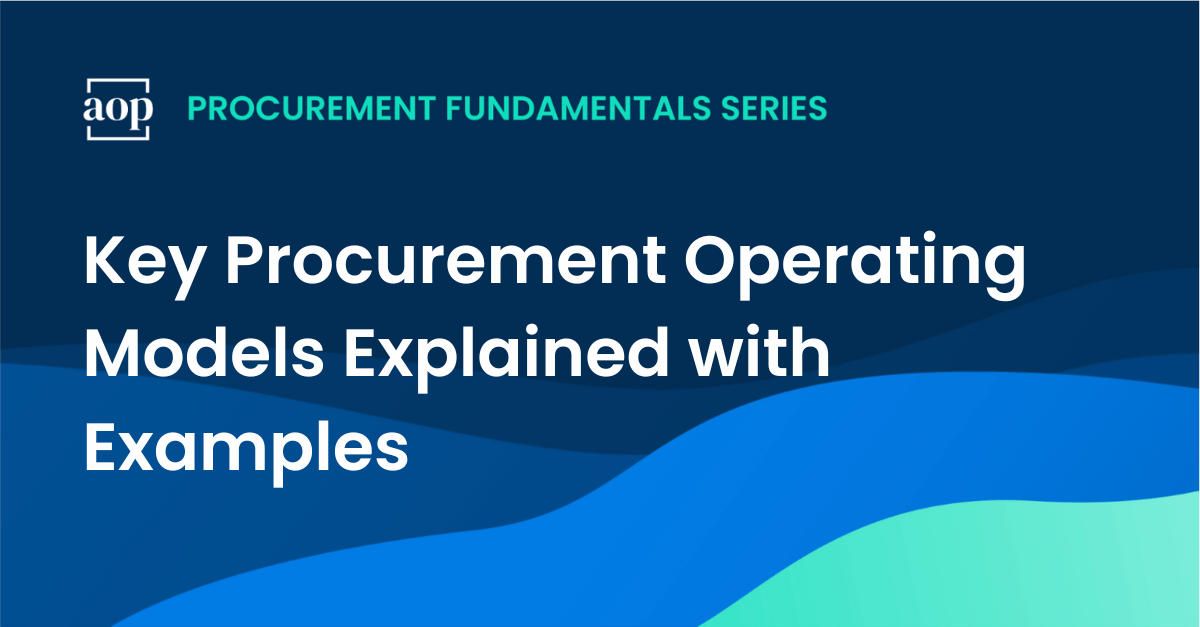6 min read
Procurement Orchestration Explained: All You Need To Know
Philip Ideson : February 21, 2025

Procurement teams constantly face increasing levels and forms of complexity: more spend categories, regional nuances, fragmented processes, and disconnected IT systems. Organizations need to address these challenges by strategically orchestrating and integrating all procurement activities, processes, and stakeholders into a unified, seamless approach.
For procurement to be effective at managing enterprise spend, they must serve as the “front door” for business stakeholders—the entry point for teams to acquire the products and services they need, while also providing governance, risk mitigation, and strategic oversight. With procurement orchestration software, procurement can allow budget holders and distributed buyers to take responsibility for less strategic purchases while maintaining visibility, compliance, and efficiency on managed spend.
Let’s go through everything you should know about procurement orchestration and your options for implementing it successfully in your organization.
What exactly is procurement orchestration?
Procurement orchestration is a comprehensive and digitally supported methodology that facilitates the coordination of multiple procurement processes, systems, and stakeholders across the organization and across the entire source-to-pay lifecycle.
Orchestration creates a cohesive, end-to-end procurement ecosystem that drives more efficiency, visibility, and collaboration and allows procurement to focus on higher-level strategic activities. Orchestration also makes it easier for procurement to be more responsive to the changing needs of the business.
Orchestration is not just about automation—it ensures that procurement priorities align with business goals, enhance collaboration, and optimize workflows across strategic sourcing, supplier management, contract management, and purchasing.
At its core, procurement orchestration ensures that:
- Tasks across sourcing, supplier management, contract management, and purchasing are harmonized.
- Stakeholders—from procurement to finance to business units—collaborate seamlessly.
- Workflows are optimized and aligned with business needs.
- Technology and data enable better decision-making and efficiency.
The need for orchestration grew from the reality that many procurement activities happened in silos. You might have had separate processes within an ERP system for approvals, while supplier management was handled over Excel and emails. While these conditions resulted from a natural desire to leverage ‘best-of-breed’ technologies, they are also problematic in terms of visibility and user experience.
Procurement orchestration creates a centralized and structured framework that:
- Streamlines intake management, making it easier for business stakeholders to request what they need.
- Provides visibility into spend, approval status, compliance, and supplier performance.
- Enables automation and integration across procurement and financial systems.
- Supports data-driven decision making.
This approach is especially important in complex organizations where procurement must coordinate across different geographies, regulatory environments, and technology stacks while ensuring operational efficiency.
Signs your organization needs procurement orchestration layer
According to recent research conducted by Art of Procurement and ORO Labs, many procurement teams recognize the need for orchestration but still rely on manual, disconnected processes that hinder efficiency and transparency.
If your organization faces these challenges, it may be time to prioritize procurement orchestration:
1. Heavy reliance on manual and disjointed processes
- 72 percent of procurement teams report that their processes are at least partially manual.
- 64 percent still rely on spreadsheets and 67 percent use email to coordinate procurement activities across multiple systems.
- Manual workflows create inefficiencies, increase risk, and slow down procurement cycle times.
Procurement orchestration replaces scattered, ad-hoc workflows with a structured, automated approach, ensuring seamless execution and integration across teams.
2. Limited real-time visibility into procurement activities
- 47 percent of procurement professionals say they have low or very low visibility into their real-time procurement activities.
- This number increases dramatically for non-procurement stakeholders, who are twice as likely to report very low visibility.
Without a centralized orchestration layer, procurement lacks the transparency needed to make informed, data-driven decisions. Orchestration enables real-time monitoring of spend, supplier performance, and compliance, ensuring procurement leaders always have a clear view of what’s happening.
3. Procurement is not seen as a strategic function
- While 56 percent of organizations acknowledge procurement as a strategic function, many still view it as a tactical or administrative role.
- Procurement teams that prioritize orchestration and innovation are far more likely to be perceived as strategic enablers of business success.
By embracing orchestration, procurement shifts from a transactional function to a business-critical partner, aligning purchasing with corporate goals and enabling faster decision-making.
4. Friction between procurement and business stakeholders
- Non-procurement teams are three times as likely to say procurement is difficult to work with.
- 45 percent of procurement teams that prioritize orchestration are seen as easy to collaborate with, compared to much lower numbers for those that don’t.
When procurement processes are complex, slow, or difficult to navigate, stakeholders bypass procurement altogether, leading to maverick spend, compliance risks, and cost inefficiencies. Procurement orchestration simplifies stakeholder engagement by acting as a “front door” for business users, guiding them through the right processes while maintaining governance.
5. Siloed and inefficient technology stacks
- Organizations are split almost evenly between using Suite (32 percent), Best-of-Breed (34 percent), and In-House Built (34 percent) procurement technologies.
- Many procurement teams struggle to integrate disparate tools, resulting in disconnected processes and data silos.
A well-implemented procurement orchestration platform serves as a connective layer across all procurement tools, ensuring seamless integration and a unified experience for users across the organization.
6. Slow change management and implementation cycles
- On average, it takes procurement between one to six months to implement process changes.
- Procurement teams that value innovation are significantly faster at driving change, while those that lack an innovation mindset take much longer.
Organizations that prioritize orchestration can implement change faster and more effectively, as orchestration provides the flexibility to adapt procurement processes dynamically.
Key components of procurement orchestration
Orchestration can mean different things to different people. For some people, it may have more of a data focus , while others may see it more related to workflows and people.
Successful procurement orchestration is built on four foundational elements:
1. Procurement as the “front door” for business stakeholders
Procurement orchestration starts with a centralized intake process, ensuring business users have an easy, compliant way to request the goods and services they need. Intake management solutions streamline the buying process by:
- Directing requests to the right procurement workflows.
- Automating approvals for lower-risk purchases.
- Ensuring compliance while reducing bottlenecks.
By simplifying how stakeholders engage with procurement, orchestration shifts the function from an enforcer to an enabler, allowing the business to move faster while maintaining governance.
2. Automated workflows and process optimization
Automation is at the heart of procurement orchestration, reducing manual work and improving speed. Workflow automation tools help standardize:
- Purchase request and approval processes.
- Supplier onboarding and contract management.
- Compliance tracking and risk assessments.
This allows procurement teams to focus on strategic initiatives rather than being bogged down in transactional tasks.
3. Supplier relationship management & visibility
Procurement orchestration ensures supplier management is proactive, not reactive. Through supplier marketplaces and performance tracking, organizations can:
- Identify and onboard the best suppliers efficiently.
- Monitor supplier risk and performance in real time.
- Enable collaboration across regions and business units.
This visibility leads to stronger supplier partnerships and reduces disruptions in the supply chain.
4. Data, analytics, and compliance oversight
Many procurement orchestration solutions provide a layer of data and analytics. The natural idea here is that what gets measured gets improved. These capabilities provide:
- Real-time visibility into spend trends and cost-saving opportunities.
- Predictive forecasting to anticipate demand and mitigate risks.
- Automated compliance tracking, ensuring purchases align with contracts and regulations.
By leveraging data and automation, procurement teams can shift from a reactive to a proactive approach, improving agility and efficiency.
You can see orchestration as both a method and a platform. If you’re looking for a tool or technology partner, you can find a number of orchestration solution providers in the Art of Procurement Provider Directory, including Focal Point, ORO Labs, Tonkean or Zip.
Implementing procurement orchestration in your organization
While procurement orchestration delivers clear advantages, its success depends on strategic implementation. Organizations must rethink how procurement interacts with stakeholders, integrates with technology, and manages workflows to maximize efficiency and control.
Here’s a step-by-step guide to effectively implementing procurement orchestration:
Establish a centralized intake and orchestration layer
The first step in procurement orchestration is ensuring stakeholders have a single entry point to request products and services. A procurement intake management solution acts as the front door, guiding business users to the correct procurement channel based on factors like:
- Purchase category and complexity
- Budget authority and approval thresholds
- Compliance and risk considerations
By routing requests automatically, procurement can streamline approvals while maintaining visibility and control.
Automate key procurement workflows
To eliminate inefficiencies, organizations must identify manual processes that slow down purchasing and replace them with automated workflows. This includes:
- Purchase order automation to reduce administrative work.
- Automated approval routing for contract sign-offs and high-volume purchasing.
- Compliance monitoring tools to track policy adherence in real time.
Workflow automation ensures that procurement activities move quickly and predictably, reducing cycle times and improving the experience for business users.
Integrate procurement with finance, supply chain, and IT systems
For procurement orchestration to succeed, it must connect seamlessly with existing enterprise systems. Integration allows for:
- Real-time spend visibility across departments.
- Automated reconciliation between procurement and finance teams.
- Faster supplier onboarding by linking procurement with third-party risk management platforms.
Using cloud-based procurement solutions with open APIs makes it easier to connect procurement tools with ERPs, contract management systems, and supplier networks.
Implement supplier performance management and compliance tracking
Procurement orchestration extends beyond purchasing—it also ensures supplier relationships remain strategic. Organizations should:
- Set clear performance KPIs and track supplier compliance.
- Use real-time risk monitoring to detect potential disruptions.
- Automate contract management to ensure all purchases align with negotiated agreements.
If you already have a supplier relationship management solution in place, you may either want to integrate it to your orchestration platform, or align processes between different systems. By embedding supplier performance management and risk into your procurement orchestration workflows, you can strengthen supplier partnerships and reduce supply chain risks.
Bottom line: the future of procurement is orchestrated
Procurement orchestration is more than another tool or software layer—it’s a strategic evolution. By integrating processes, people, and technology into a seamless, automated framework, procurement teams can eliminate inefficiencies, improve visibility, and become a true business enabler.
When procurement operates as the “front door” for business users, it transforms from a transactional function into a strategic hub for value creation. Organizations that embrace orchestration can streamline workflows, enforce compliance without adding friction, and empower stakeholders to make smarter purchasing decisions.





.png)
